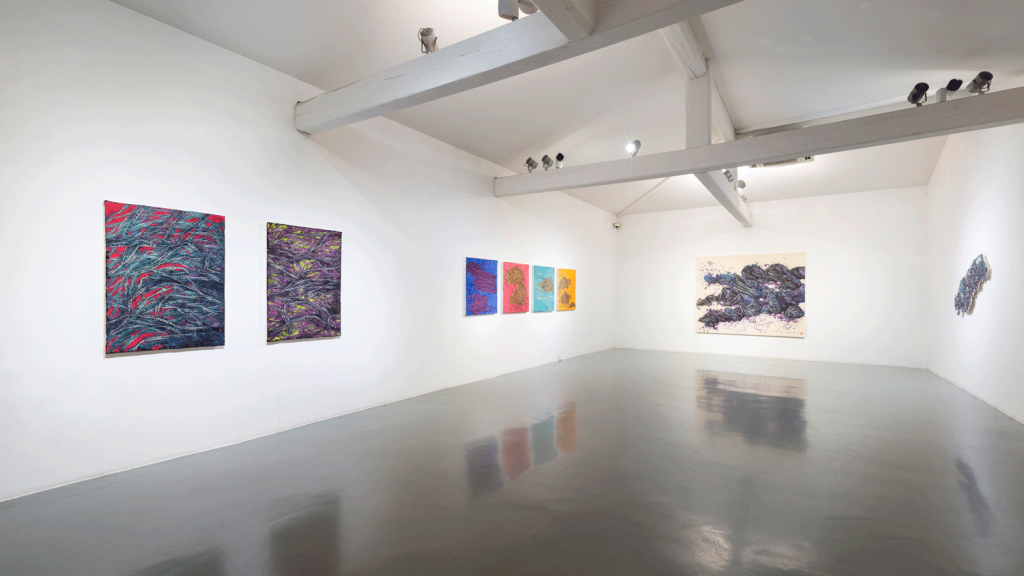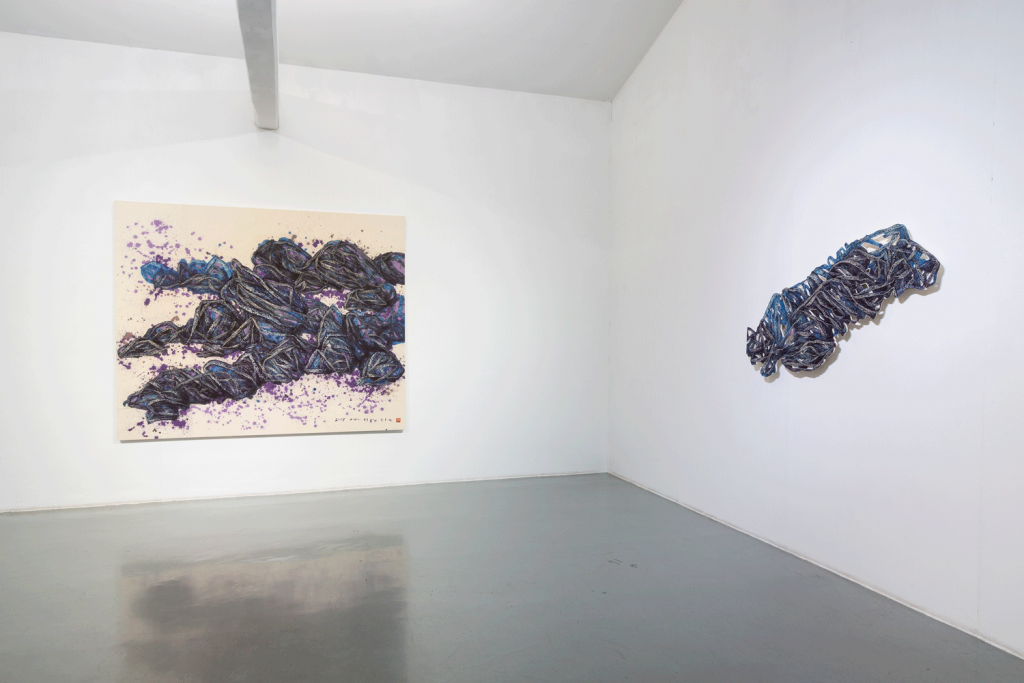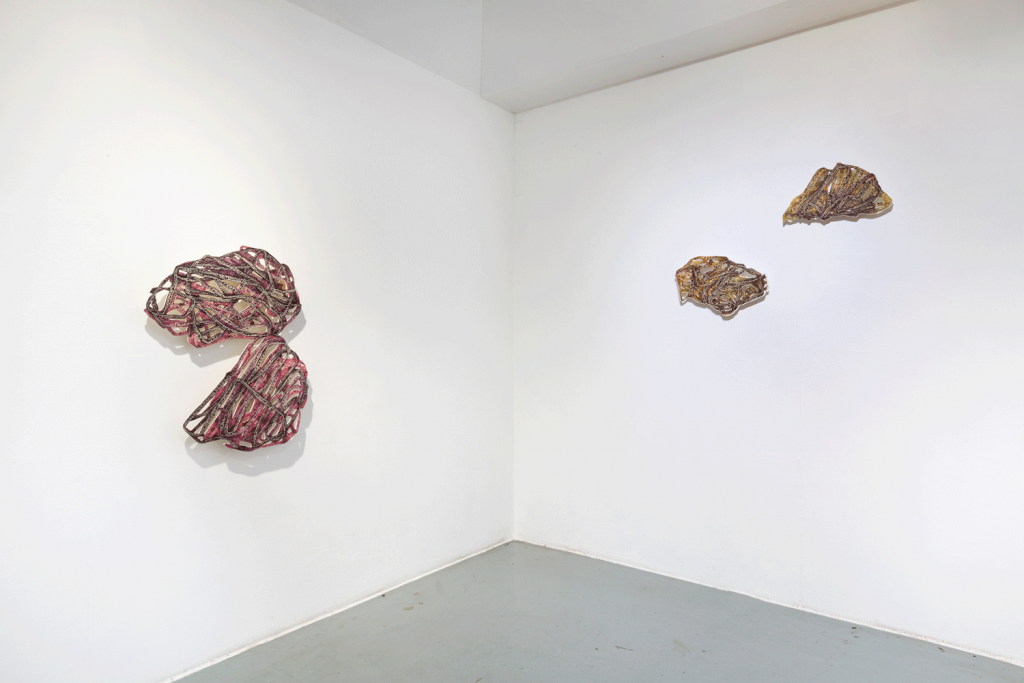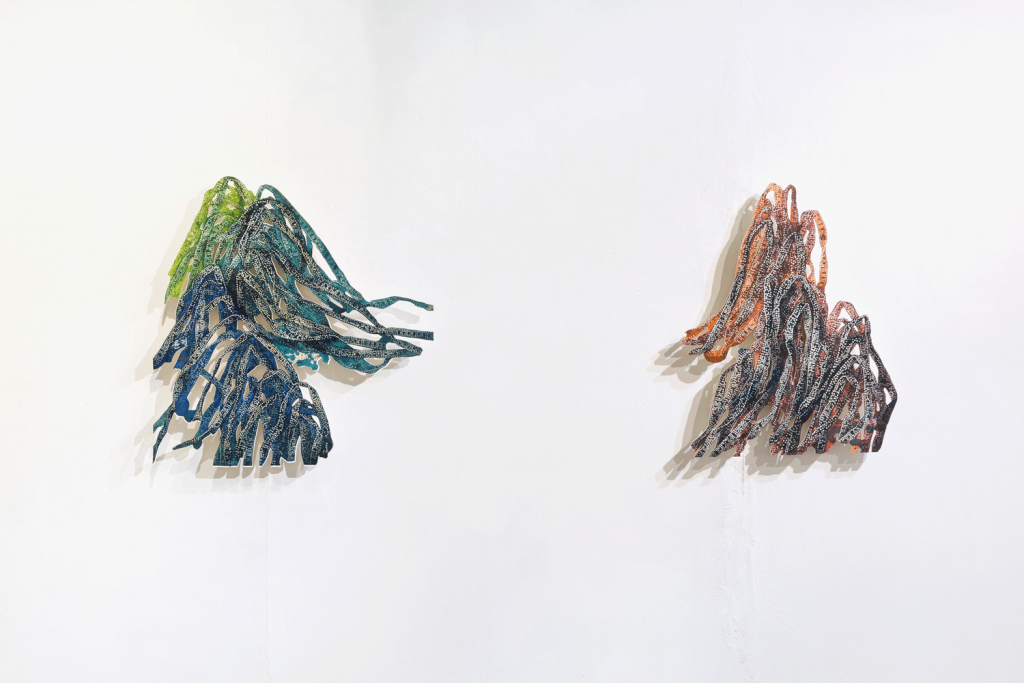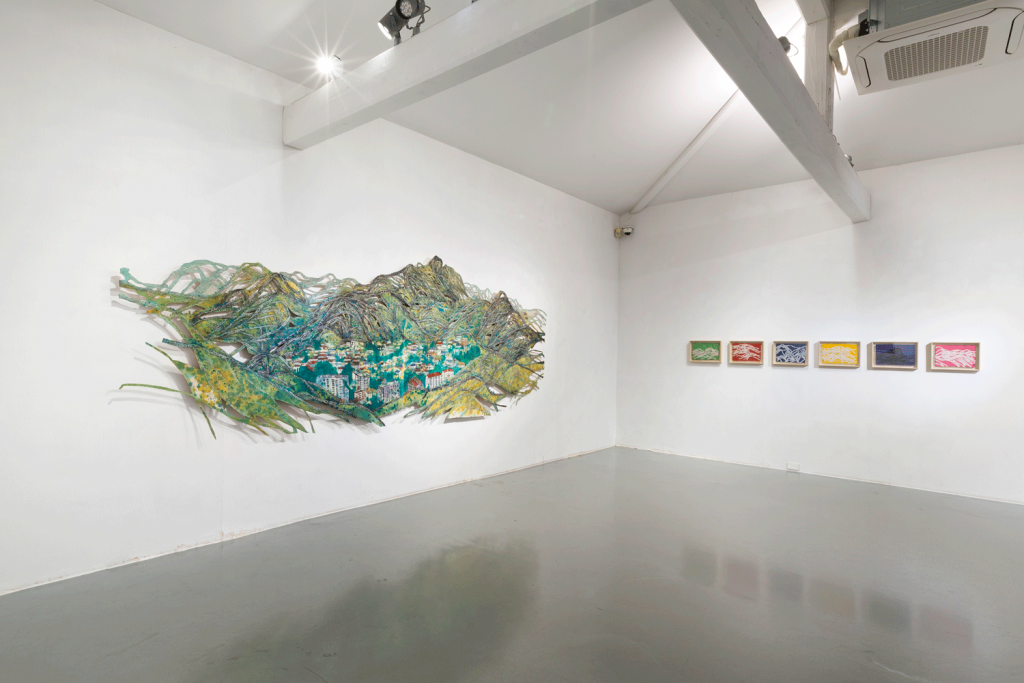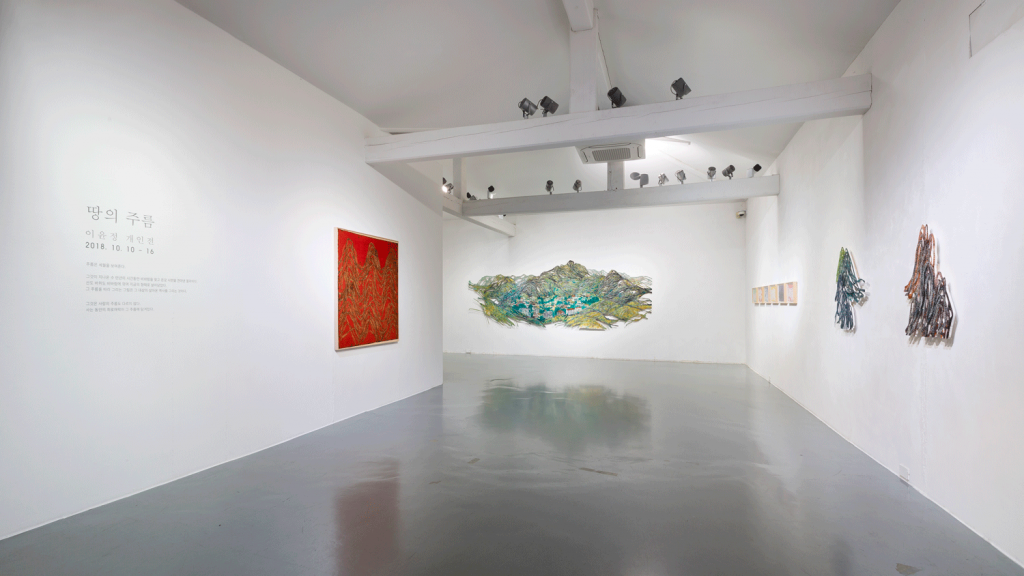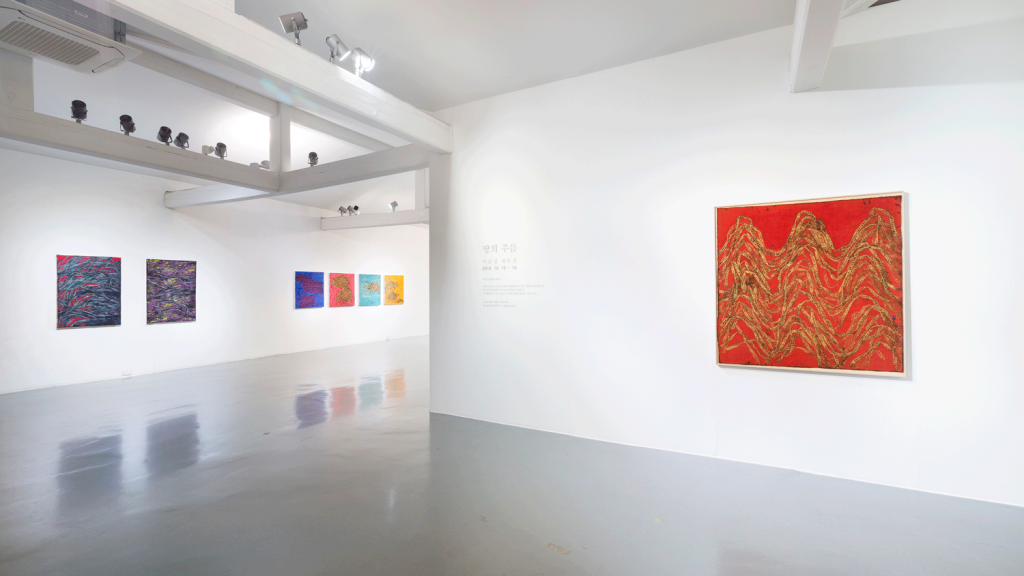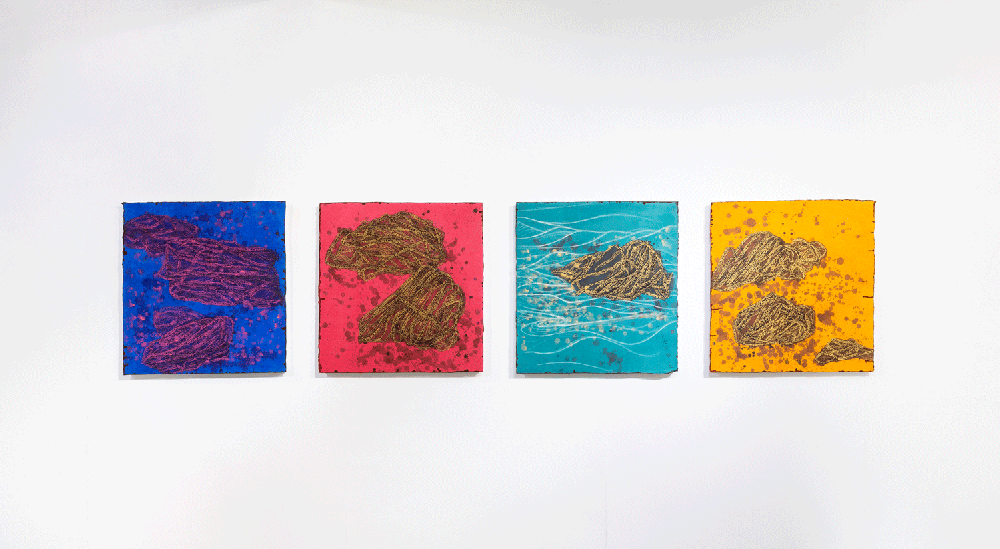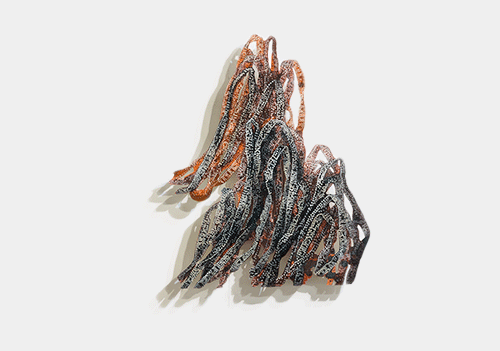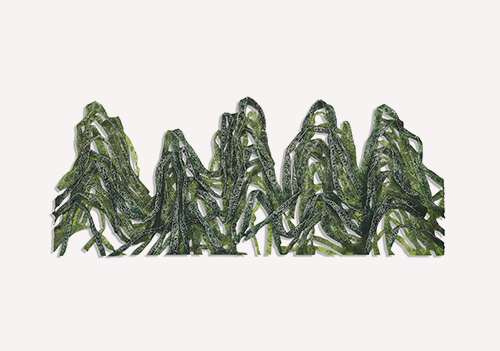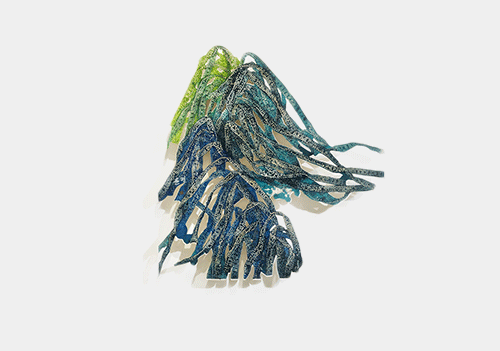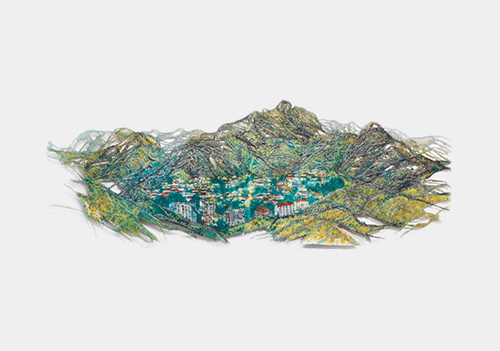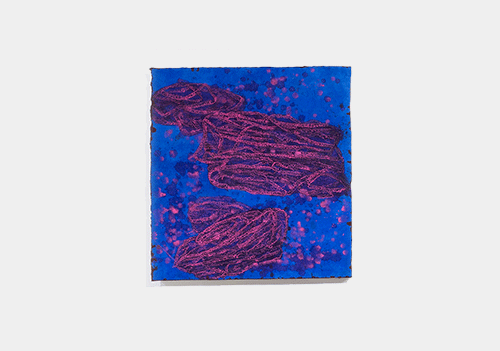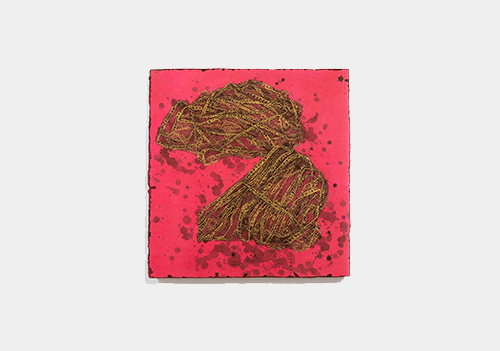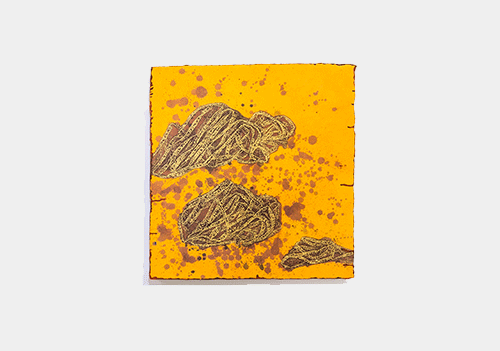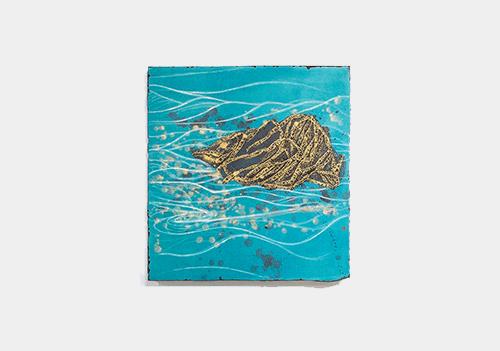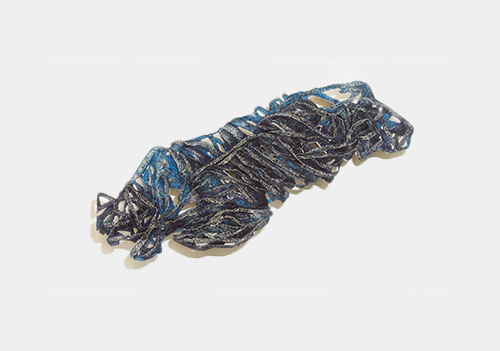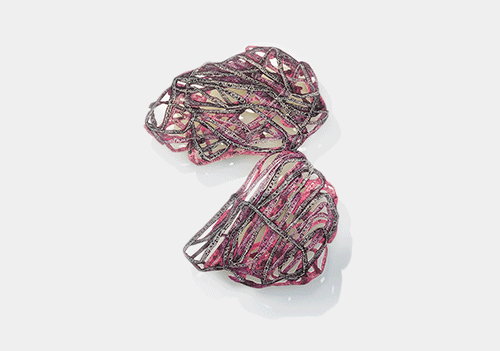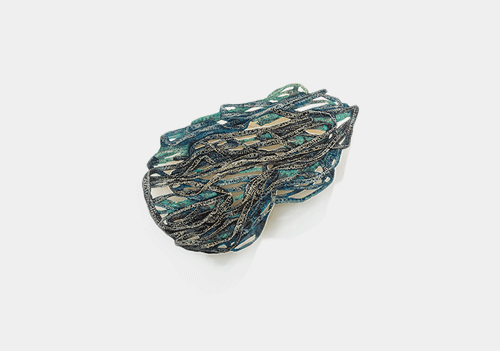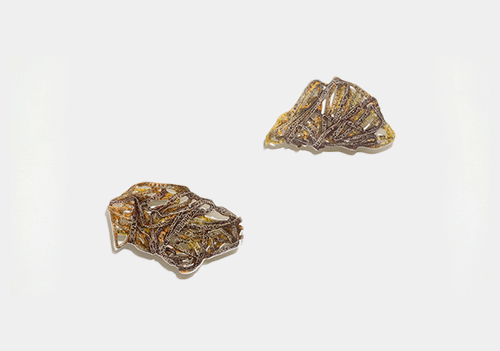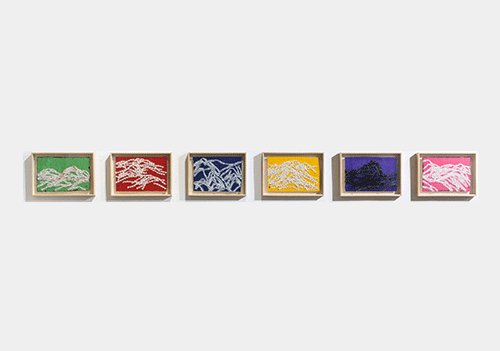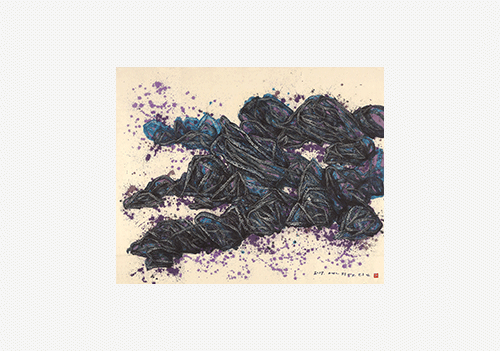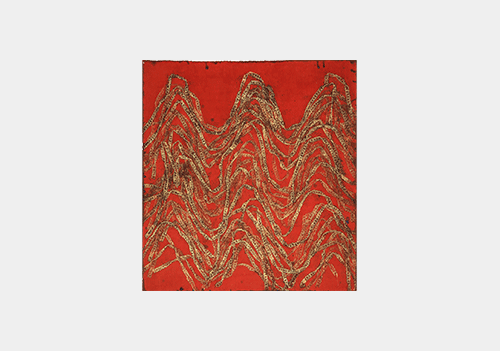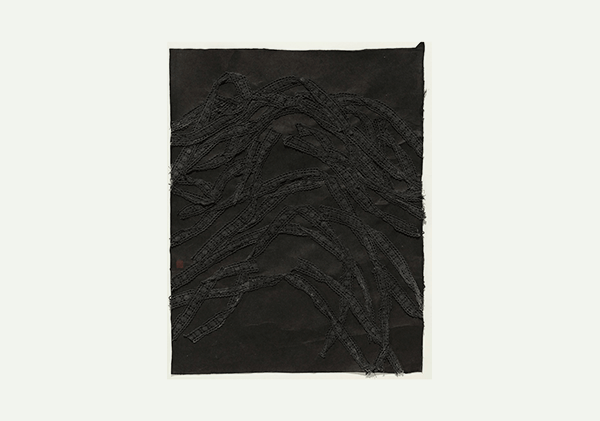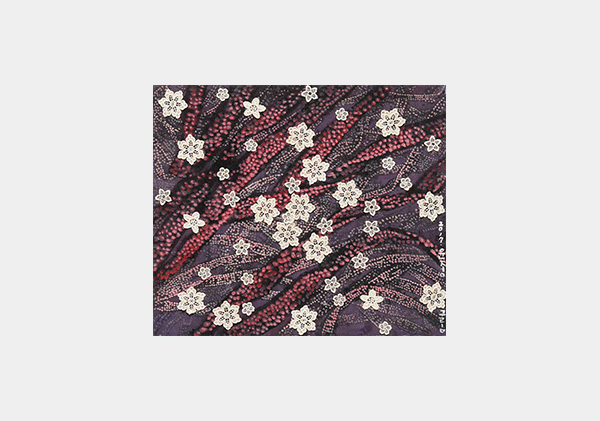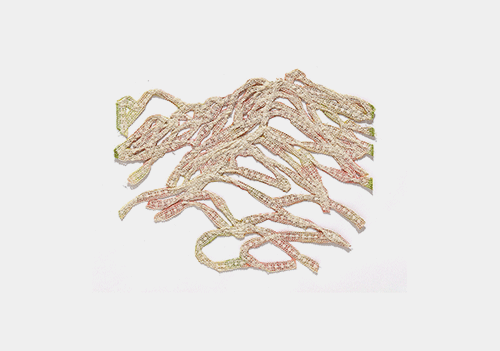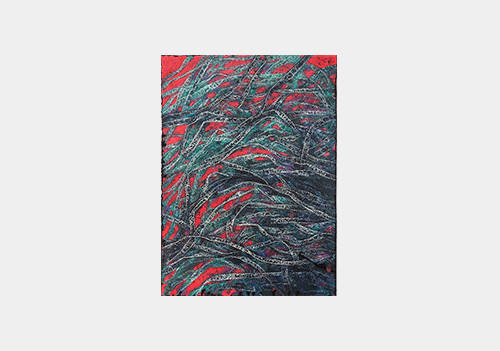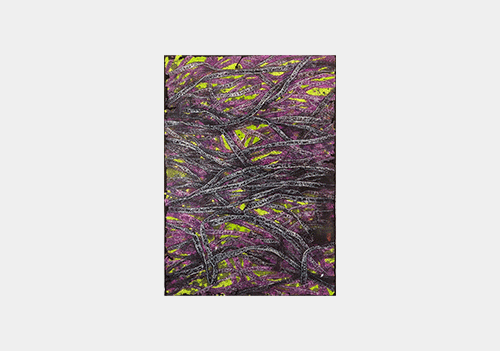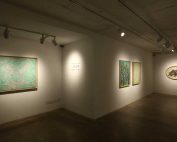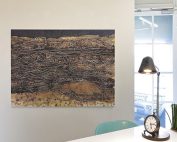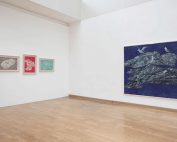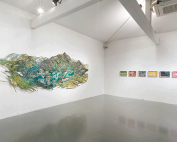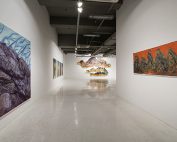Project Description
2018년 개인전 갤러리 그림손
땅의 주름
2018.10.10~10.16
[e갤러리] 끈덩이의 세월, 세상의 주름…이윤정 ‘풍랑’
[이데일리 오현주 문화전문기자] 검푸른 끈이 뭉텅이로 던져졌다. 얼마나 얽혔을까. 얼마나 엉켰을까. 억겁일 거다. 아니라면 그 끈이 산처럼 솟고 바위처럼 뭉칠 리가 없다.
작가 이윤정은 끈을 그린다. 배배 꼬인 끈의 얽힘으로 인생의 굴곡이나 존재의 엇갈림을 풀어내던 것이 처음이다. 그러던 게 변해갔다. 산의 주름이 되고 바위의 구김이 됐다. 전통동양화에서 산수를 묘사할 때 쓴다는 ‘준’이란 선을 끌어낸 거다.
방식은 이렇다. 흰색 레이스끈에 먹물을 적셔, 구기고 꼬인 채로 한지에 찍어내고, 그 흔적을 좇아 색을 여러 차례 입혀 간다. 흔적이 겹쳐지면 덩어리가 되고 펼쳐지면 땅이 된다. 끈 위에 수없이 박아낸 흰 점으로는 마무리. 산세의 깊이를 더하고 바위의 양감을 돋아낸다.
‘풍랑’(2017)은 그렇게 완성한 덩이의 세월. 세상의 주름이고 구김이다.
16일까지 서울 종로구 인사동10길 갤러리그림손서 여는 개인전 ‘땅의 주름’에서 볼 수 있다. 한지에 수묵채색. 173×210㎝. 작가 소장. 갤러리그림손 제공.
땅의 주름
끈으로 산을 그린다.
바위를 그린다.
전통적인 동양화에서는 산수를 그릴 때 준(皴)이라는 선으로 대상을 묘사한다. 이때의 준(皴)은 한자로 주름준 즉 바위와 산의 주름을 따라서 선으로 그려내는 것인데 준법은 단순한 선이 아니라 대상의 형태는 물론이고 입체감, 양감, 음영까지도 표현한다. 산수의 특징에 따라 준법은 다양하게 발달하였고 전통 산수에서는 그리는 산과 바위의 형태에 따라 그것에 적합한 준법을 사용하여 산수를 묘사해왔다.
나는 끈을 그린다.
끈 그림을 그린 지는 십여 년이 훌쩍 넘은 것 같다. 한참은 끈은 은유였고 상징이었다. 끈의 얽힘과 꼬임이 인생의 굴곡이나 존재들 간의 관계를 나타냈다. 점차로 끈의 형태가 변화하고 의미가 변화하여 지금은 그저 끈은 끈이다. 더 정확히 얘기하자면 산수를 표현하는 준의 역할을 하는 끈이다. 대상 표현의 도구로서의 끈이다.
레이스 끈에 먹물을 흠뻑 적셔 한지에 찍어내어 그 흔적을 나만의 준으로 여기며 산과 바위의 주름을 따라 간다. 구겨지고 꼬인 끈이 한지에 찍힌다. 그 흔적들이 겹쳐지면서 산과 바위의 형태를 만들고 덩어리를 만들면서 전통적인 산수와는 또 다른 산수화를 만들어 나간다. 끈으로 땅의 주름을 읽고 땅을 그린다. 이것이 내가 그림을 그리기 시작하는 첫 번째 과정이다. 이 위에 서로 다른 색을 여러 차례 겹쳐 입히고 끈의 꼬임을 강조하는 점을 찍는 과정을 지나면 서서히 끈으로 그린 산수의 모습이 드러난다.
산수의 모습이 완성되어 갈 즈음 그림에 칼을 댈 때가 있다. 준의 역할을 하며 산의 형태를 표현한 끈만 남기고 나머지 여백을 아낌없이 잘라낸다. 그러면 끈만 남은 부정형 형태의 작품이 남는다.
‘한지에 수묵 채색’
어떤 이는 그 부정형의 작품을 보고 수묵채색화가 아니라고 말한다. 수묵채색화여도 좋고 수묵채색화가 아니라도 좋다. 동양화의 번짐과 여운이 없고 디자인 도안 같다고 하는 이도 있다. 동양화여도 좋고 동양화가 아니어도 좋다. 그것은 산수로 보일 때도 있고 끈이 얽혀 있는 추상적 형태로 보일 때도 있다. 산수여도 좋고 추상이어도 좋다. 뭐라 이름 붙이지 않아도 좋다.
그것을 벽에 약간의 공간을 띄워 건다.
여기에 빛을 쏘아주면 그림 아래 그림자가 드리워지면서 또 하나의 끈의 얽힘이 나타난다. 흰 벽에 여백이 잘린 산과 바위의 부정형 덩어리가 걸린다. 그러면 그 흰 벽은 작품이 걸리는 배경이 아닌 끝없는 하늘이 되고 망망한 바다가 된다.
여백이 벽 위로 끝도 없이 확장된다.
주름은 세월을 보여준다.
그것이 지나온 수 만년의 시간동안 비바람을 맞고 온갖 시련을 견뎌낸 결과이다. 산도 바위도 비바람에 깎여 지금의 형태로 살아남았다. 그 주름을 따라 그리는 그림은 그 대상의 살아온 역사를 그리는 것이다. 그것은 사람의 주름도 다르지 않다. 사는 동안의 희로애락이 그 주름에 담겨있다.
그렇다면 끈으로 땅의 주름을 그리고 있는 지금 그리는 대상이 달라지고 형태가 달라졌지만 다시 십 수 년 전 끈 그림을 시작할 때에 표현하려 했던 것들로 회귀하고 있는 것은 아닐까 생각해본다.
2018.10월
With strings, I draw mountains.
I draw rocks. In traditional Oriental painting, when painting a shanshui(a form of natural landscapes which include mountains and rivers or waterfalls), the object is represented with lines called “jun”. Jun is a way of drawing, with a line, along the folds of rocks and mountains, i.e., folding jun in Chinese, and this jun method is not simply a line but it describes not only the forms of objects but their depth, volume, shades.
Depending on the characteristics of shanshui, the jun method had developed in various ways and in traditional shanshui, depending on the forms of mountains and rocks that were being drawn, shanshui had been portrayed using the jun method that was appropriate to them.
I draw strings
I believe I had been making string drawings for well over a decade, For a long while, string was a metaphor and a symbol. Its entaglement and twists showed the ups and downs of life or the relationship among beings. Gradually, the string’s form changed and it’s meaning changed; now, a string is just a string. To be more precise, it is a string that plays the role of jun depicting the shanshui. It is a string as a tool of expression of objects.
I soak lace strings with Chinese ink, imprint it on hanji paper(traditional Korean paper), and considering the trace to be my very own jun, I follow along the folds of the mountains and rocks. The crumpled and twined strings are stamped on the hanji. As these traces overlap, it creates forms of mountains and rocks, and as it builds a mass, it creates a shanshui that is different from the traditional ones. With strings, I read the folds of land and draw the land. This is the first process of which I start to make paintings.
As I go through the process of putting on different colors, overlapping them numerous times, and mark dots which emphasize the twists of the string, an image of shanshui, drawn with strings, slowly, comes into view.
When the image of shanshui is about to be completed, I, at times, take a knife and go at the painting.
I leave the strings depicting the form of mountains, playing its role as jun, and I generously cut out the remaining margin.
Then remains a piece of irregular form where it is left with strings, only.
“Korean color and ink painting on hanji”
Some people say, when looking at a work of irregular form, that it is not a Korean color and ink painting. It may be a Korean color and ink painting, and it may not be a Korean color and ink painting. There are those who say that there are no ink-spreadings or a sense of emotional resonance found in Oriental paintings, and that it looks like a design drawing. It may be an Oriental painting and it may not to be an Oriental painting.
There are times when it looks like a shanshui, and there are times when it looks like an abstract form where cords are intertwined. It may be a shanshui and it may be an abstract. It doesn’t need to be named into something.
It is hung with a little space off from the wall.When light is shun on it, shadow casts underneath the painting, revealing another intertwinement of the strings.
On the white wall hangs a mass of irregular form of mountains and rocks of which the margin has been cut off.
Then, the white wall becomes an endless sky and boundless ocean, not the background where the work is hung.The margin, without limit, extends across the wall.
The folds show time.
They are the result of enduring all sorts of ordeal, baring the winds and rains for tens of thousands of years passed. Even mountains and even rocks had been shaved by the winds and rains and survived in the form they are now. To draw along the folds is an act of drawing the history which the object had lived through. It is no different with the folds(wrinkles) of humans. All the joy, anger, fear and pleasures of life are embodied in the folds.
Then, I think, that although, now, the object of drawing have changed, as with the forms drawing the folds of land with strings may be my return to what I had tried to express when starting the string drawings, dozens of years ago, again.
Yoonjeong Lee
